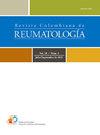Epidemiological data and burden of osteoporosis and fragility fractures in Latin America: Changes over a decade
Q3 Health Professions
引用次数: 0
Abstract
Introduction
After a decade since AUDIT LATAM 2012, an executive committee of the International Osteoporosis Foundation of Latin America (LATAM-IOF) updated the data on the epidemiological burden of osteoporosis and fragility fractures in Latin America to generate greater awareness about osteoporosis and prevent fragility fractures.
Objective
To describe the burden of osteoporosis and fragility fractures, their management and treatment, and the availability of health resources in Latin America over a 10-year period.
Materials and methods
A two-phase study was designed. Phase 1 collected demographic data from 2015 to 2019, described the current infrastructure for Healthcare Systems osteoporosis related as well as the related health care policies on osteoporosis. We assessed the availability of diagnosis tools and pharmacological treatment. Phase 2 focused on the incidence of major fragility fractures in men and women aged 50 and over, as well as the costs of these fractures when available.
Results
Nineteen countries completed phase 1. More than 40% of the population is over 50 years-old and life expectancy is on average 75.8 years. The availability of densitometry (DXA) is 0.68 per 100,000 inhabitants. Seven countries have FRAX® calibrated with their own epidemiological data. Bisphosphonates are the primary treatment option for osteoporosis. A larger number of countries have conducted calcium and vitamin D intake surveys. There are 68 active medical and/or patient societies involved in activities related with osteoporosis. Phase 2 included fewer countries, representing a significant gap in osteoporosis information in the region. Our rates of hip fractures are intermediate ranging between 108 and 276.2 per 100,000 inhabitants being the highest in Colombia and the lowest in Mexico. The costs of hip fracture range from USD 4959 to USD 8261.
Conclusions
Regional data from Latin America revealed that healthcare assistance and global awareness has improved in comparison to the 2012 figures. The hip fracture rates in Latin America remains at intermediate levels compared to other regions. There is a scarcity of cost studies, however, high costs of osteoporotic fractures were confirmed to have a negative impact on healthcare systems of the region.
拉丁美洲骨质疏松和脆性骨折的流行病学数据和负担:十年来的变化
自2012年拉丁美洲国际骨质疏松基金会(LATAM- iof)审计报告发布10年后,拉丁美洲国际骨质疏松基金会(LATAM- iof)执行委员会更新了拉丁美洲骨质疏松症和脆性骨折的流行病学负担数据,以提高人们对骨质疏松症和预防脆性骨折的认识。目的描述10年来拉丁美洲骨质疏松和脆性骨折的负担、管理和治疗以及卫生资源的可用性。材料与方法设计两期研究。第一阶段收集了2015年至2019年的人口统计数据,描述了当前与骨质疏松症相关的医疗保健系统基础设施以及与骨质疏松症相关的医疗保健政策。我们评估了诊断工具和药物治疗的可用性。第二阶段的重点是50岁及以上男性和女性的主要脆性骨折发生率,以及这些骨折的成本。结果19个国家完成了第一阶段。超过40%的人口超过50岁,平均预期寿命为75.8岁。人口密度测量(DXA)的可用性为每10万居民0.68人。7个国家使用本国流行病学数据校准了FRAX®。双膦酸盐是治疗骨质疏松症的主要选择。更多的国家进行了钙和维生素D摄入调查。有68个活跃的医学和/或患者协会参与与骨质疏松症有关的活动。第2阶段纳入的国家较少,表明该地区骨质疏松症信息存在显著差距。我们的髋部骨折发生率介于每10万人108至276.2之间,其中哥伦比亚最高,墨西哥最低。髋部骨折的费用从4959美元到8261美元不等。来自拉丁美洲的区域数据显示,与2012年的数据相比,医疗援助和全球意识有所提高。与其他地区相比,拉丁美洲的髋部骨折率仍处于中等水平。成本研究缺乏,然而,骨质疏松性骨折的高成本被证实对该地区的医疗保健系统产生负面影响。
本文章由计算机程序翻译,如有差异,请以英文原文为准。
求助全文
约1分钟内获得全文
求助全文
来源期刊

Revista Colombiana de Reumatologia
Medicine-Rheumatology
CiteScore
0.80
自引率
0.00%
发文量
92
期刊介绍:
The Colombian Journal of Rheumatology (Revista Colombiana de Reumatología) is the official organ of the Colombian Association of Rheumatology (Asociación Colombiana de Reumatología) and the Central American, Caribbean and Andean Association of Rheumatology (Asociación Centroamericana Caribe Andina de Reumatología) - ACCA. It was created in December 1993 with the purpose of disseminating scientific information derived from primary and secondary research and presenting cases coming from the practice of Rheumatology in Latin America. Since its foundation, the Journal has been characterized by its plurality with subjects of all rheumatic and osteomuscular pathologies, in the form of original articles, historical articles, economic evaluations, and articles of reflection and education in Medicine. It covers an extensive area of topics ranging from the broad spectrum of the clinical aspects of rheumatology and related areas in autoimmunity (both in pediatric and adult pathologies), to aspects of basic sciences. It is an academic tool for the different members of the academic and scientific community at their different levels of training, from undergraduate to post-doctoral degrees, managing to integrate all actors inter and trans disciplinarily. It is intended for rheumatologists, general internists, specialists in related areas, and general practitioners in the country and abroad. It has become an important space in the work of all rheumatologists from Central and South America.
 求助内容:
求助内容: 应助结果提醒方式:
应助结果提醒方式:


